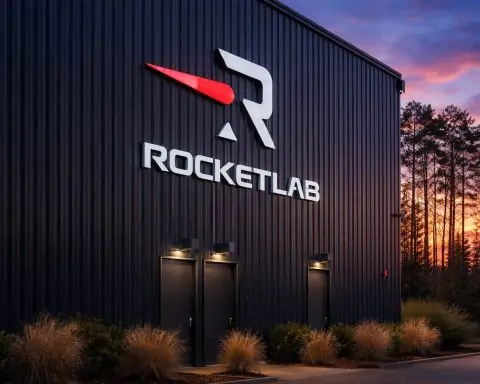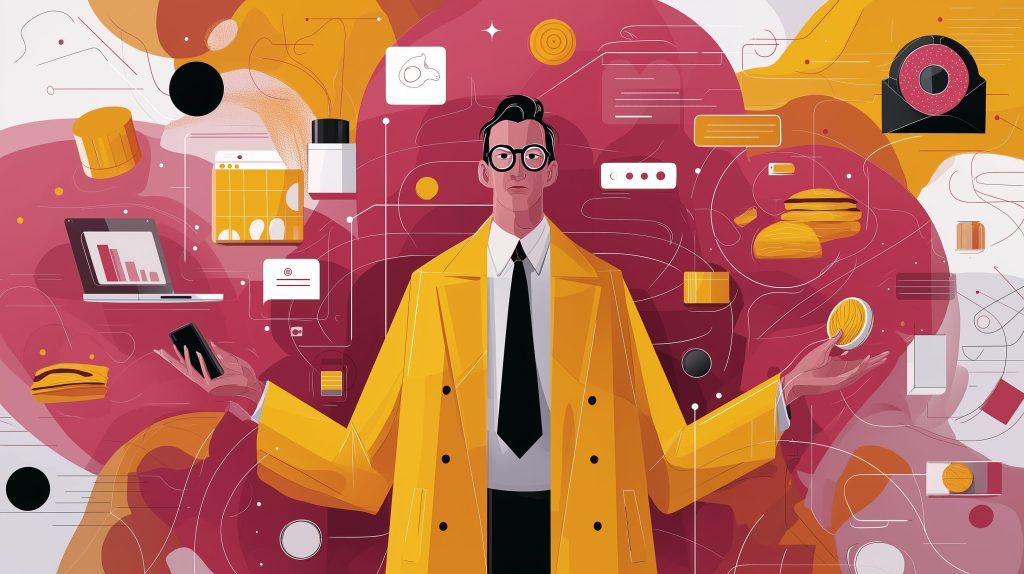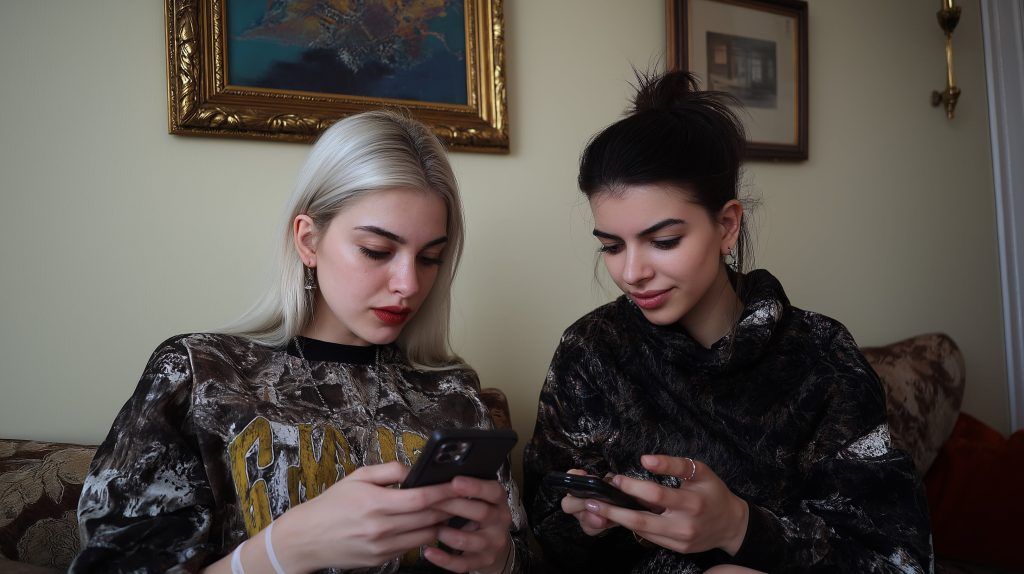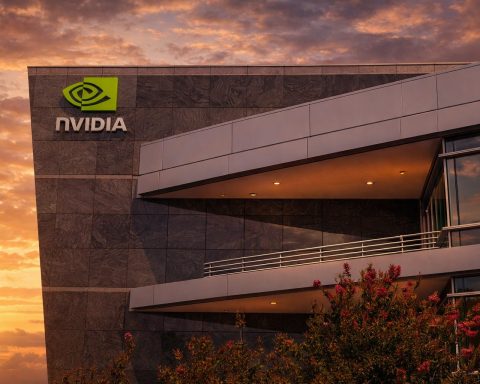- OpenAI’s revenue reached a $12 billion annualized run rate in the first seven months of 2025, implying about $1 billion per month.
- OpenAI’s weekly active users across consumer and business products reached about 700 million.
- OpenAI raised its 2025 cash burn forecast to roughly $8 billion, up from $7 billion.
- The second $30 billion tranche of OpenAI’s funding round is nearly finalized, with about $7.5 billion in new funding, as Sequoia Capital and Tiger Global each pledge hundreds of millions and SoftBank has committed $32 billion since late 2024.
- Microsoft is negotiating a new deal to ensure continued access to OpenAI’s latest models even if OpenAI declares AGI, potentially extending beyond 2030.
- On July 29, 2025, ChatGPT Study Mode was announced, turning the tool into a Socratic tutor with step-by-step questions and hints and making it available to all logged-in users.
- On July 30, 2025, OpenAI and Instructure announced IgniteAI to embed GPT-4-based tools into Canvas for AI-generated quizzes, rubrics, and summaries.
- Stargate Norway was announced on July 31, 2025, a $1 billion data center project in Narvik to install 100,000 NVIDIA GPUs via a 50-50 joint venture between Aker ASA and Nscale.
- The Narvik site will run on 100% renewable energy from hydropower and is pitched as one of Europe’s first true AI gigafactories.
- On July 30, 2025, the White House event announced a health data interoperability initiative with 60 companies including OpenAI to standardize records and enable secure data exchange by early 2026.
OpenAI Revenue Surges to $12B as ChatGPT Booms and Investors Pile In
OpenAI’s financial might was on full display this week, as The Information reported the ChatGPT creator doubled its revenue in the first seven months of 2025 – reaching a staggering $12 billion annualized run rate [1] [2]. This implies OpenAI is now pulling in about $1 billion per month on the back of surging demand for ChatGPT and new enterprise deals. The company’s user base has exploded to an estimated 700 million weekly active users across consumer and business products [3] [4] – an unprecedented scale for an AI platform. (For comparison, this weekly user count rivals the population of two Americas.) Such rapid growth is fueling aggressive expansion: OpenAI reportedly raised its 2025 cash burn forecast to $8 billion (up from $7 B earlier) to support heavy R&D and infrastructure investments [5] [6].
Investors are taking note. OpenAI is lining up a massive funding round – the second $30 billion tranche of its ongoing raise – drawing commitments from top Silicon Valley backers. Sequoia Capital and Tiger Global are each poised to pour in hundreds of millions, and Japan’s SoftBank alone has committed a jaw-dropping $32 billion to OpenAI since late 2024 [7] [8]. In total, sources say about $7.5 billion in new funding is nearly finalized [9]. This avalanche of cash suggests investors are betting big on OpenAI maintaining its AI leadership – even as the company’s for-profit ambitions grow. “OpenAI has increased its cash burn projection to roughly $8 billion in 2025,” one report noted, underscoring the massive capital and compute required to train cutting-edge models and serve a global user base [10]. Analysts say the sky-high revenue run-rate cements OpenAI as one of the fastest-growing startups in tech history [11] [12], though it also raises the stakes: rivals like Meta are already poaching top talent (at least eight OpenAI researchers have jumped to Meta’s new AI lab this year) [13], and regulators worldwide are watching the AI market’s concentration. For now, Sam Altman’s company appears flush with cash and users, positioning it for even bigger moves ahead.
Microsoft Moves to Secure OpenAI’s Tech – Even Beyond an AGI Breakthrough
In a parallel development, Microsoft is maneuvering to solidify its long-term access to OpenAI’s technology. Bloomberg revealed (and Reuters confirmed) that Microsoft is in advanced talks on a new deal ensuring it can use OpenAI’s latest models even if OpenAI achieves artificial general intelligence (AGI) and invokes a contract clause that would otherwise cut Microsoft off [14] [15]. Under the existing partnership, if OpenAI ever declares it reached AGI – AI that surpasses human intelligence – Microsoft’s rights to some of OpenAI’s tech could be severed by 2030. That prospect is untenable for Microsoft, which has integrated OpenAI’s models deeply into Azure cloud services and products like GitHub Copilot, Office 365 Copilot, and Windows [16]. Losing access would be a strategic blow. As TechCrunch noted, “If OpenAI suddenly declares it has achieved AGI and cuts off access, Microsoft would lose a huge strategic advantage” [17] built on OpenAI’s AI.
To prevent that, the two companies have been regularly negotiating new terms to extend Microsoft’s access well beyond the AGI milestone [18] [19]. Insiders say an agreement could come within weeks [20]. Microsoft – already OpenAI’s biggest backer with $13.75 B invested – is reportedly seeking a larger equity stake in a restructured OpenAI and assurances it won’t be left behind in the AGI era [21] [22]. In return, OpenAI aims to shake off constraints of its hybrid nonprofit structure and operate more like a fully commercial enterprise [23]. A sticking point has been the “AGI clause”: OpenAI’s current charter ties Microsoft’s investment returns to the non-profit mission and AGI timeline, capping profits. Last month, The Information reported Microsoft and OpenAI were “at odds” over this clause and how to redefine it [24]. Now, with negotiations progressing, sources hint at positive momentum – though they caution potential roadblocks remain, including regulatory scrutiny and Elon Musk’s lawsuit attempting to block OpenAI’s for-profit transition [25]. (Musk, a co-founder turned critic, sued OpenAI in July for allegedly straying from its original “AI for humanity” mission [26].) For users and developers, an updated Microsoft-OpenAI pact could mean continued seamless access to OpenAI’s cutting-edge models via Azure, regardless of extraordinary AI milestones. And for competitors like Google and Amazon, it signals that Microsoft has no intention of loosening its exclusive grip on OpenAI’s tech – it’s doubling down instead. As one report put it, Microsoft is keen to “maintain rights to the startup’s advanced technology when it achieves AGI,” effectively future-proofing its AI advantage [27]. All eyes now turn to the negotiators to see if they can rewrite one of the highest-stakes deals in tech before the decade’s end.
ChatGPT Debuts “Study Mode” to Curb Cheating – Education Experts Weigh In
With a new school year looming, OpenAI rolled out a major ChatGPT feature for students: a built-in “study mode” designed to guide learning rather than just spitting out answers. Announced July 29, the optional mode transforms ChatGPT into a Socratic tutor, refusing to provide direct homework answers and instead prompting students with step-by-step questions and hints [28] [29]. The goal is to encourage critical thinking and genuine understanding. “Instead of doing the work for them, study mode encourages students to think critically,” explained Robbie Torney of Common Sense Media, calling it a “positive step toward effective AI use for learning” [30]. Under the hood, OpenAI says it collaborated with teachers and learning scientists to craft custom system instructions that foster good study habits – things like guiding students to break down problems, reflect on their thought process, and stay engaged [31] [32]. The mode can even quiz users and adapt to their skill level, functioning as a 24/7 personal tutor for homework help, exam prep, and learning new concepts [33] [34]. Crucially, Study Mode is available to all logged-in ChatGPT users (Free and paid), indicating OpenAI’s broad strategy to address educators’ concerns [35]. “When ChatGPT is prompted to teach or tutor, it can significantly improve academic performance, but when it’s just used as an answer machine, it can hinder learning,” noted Leah Belsky, OpenAI’s VP of education [36], underscoring why the company built this feature.
Education leaders largely welcomed the move – but with caveats. The Guardian reports it comes amid “rising cases of [AI] misuse at universities” and a sharp uptick in AI-assisted cheating detected over the past year [37] [38]. By walking students through Bayes’ theorem or Shakespeare step-by-step instead of serving a completed essay, the new mode aims to “encourage responsible academic use” of AI [39] [40]. “We definitely don’t believe these tools should be misused – this is one step toward that,” said Jayna Devani, OpenAI’s international education lead [41]. She acknowledged that curbing cheating will require a “whole industry conversation” about assessment methods and clear guidelines on AI’s proper use in class [42]. Some experts remain skeptical that a mere toggle can solve the cheating dilemma. Wired pointed out that study mode is just “a click away” from the regular answer-giving ChatGPT, which may be “hard to resist for younger users” seeking easy solutions [43]. The underlying tension is that AI’s disruption of education goes beyond homework help. “What are the long-term impacts of turning to an AI tool for guidance with increasing regularity?” one WIRED columnist asked, worrying about student over-reliance even in tutor mode [44]. Still, many teachers see this as a constructive first step. “The ChatGPT study mode is the first step in ensuring real learning happens when students use AI tools,” Belsky told an education news outlet [45]. By making ChatGPT “default to a tutor” rather than a cheater’s shortcut, OpenAI is at least signaling to schools that it’s listening. Whether students embrace the training wheels – or just find another way to copy answers – will be a key storyline as classes resume.
EdTech Partnership: OpenAI’s GPT-4 Powers Canvas LMS for Teachers and Students
In a related education development, OpenAI inked a deal with ed-tech firm Instructure (maker of the popular Canvas learning management system) to embed its AI models directly into classroom workflows. Announced July 30, the partnership will integrate OpenAI’s advanced GPT-4-based tools into Canvas, enabling features like AI-generated quiz creation, automated rubric generation, discussion summaries, and content alignment to learning standards [46] [47]. Instead of using separate AI apps, teachers and students will have an AI assistant built into the LMS through Instructure’s new “IgniteAI” framework [48]. The idea is to provide a seamless, centralized AI experience in schools. Educators can customize prompts for their class, control how the chatbot interacts with students, and set guardrails for acceptable use [49]. Importantly, all student AI interactions stay visible to the teacher, and no student data is shared with OpenAI’s servers [50] – a privacy protection to reassure schools. Teachers can even receive “AI coaching tips” on how to give feedback or improve lesson plans, effectively getting pedagogical support from the system [51].
Both companies cast this as a shift away from today’s siloed AI tools toward integrated solutions across various teaching tasks [52]. “We believe this is the direction AI is headed, as opposed to point solutions that serve a single function,” said Melissa Loble, Instructure’s Chief Academic Officer [53]. “We build our agents so they can really integrate and interact with Canvas [and its users].” By having one AI that can do everything from grading to lesson prep, the aim is to lighten teachers’ administrative load – which many say contributes to burnout – while maintaining educator oversight. Industry observers see this deal as part of a larger trend. “The project by Instructure and OpenAI mirrors a larger strategic shift seen in sectors like finance and healthcare,” observed Erin Mote, CEO of InnovateEDU, noting that many industries are partnering with “frontier model” AI providers to rapidly upscale their capabilities [54] [55]. In K-12 specifically, recent surveys show 6 in 10 teachers already use AI for planning or grading [56]. By targeting tools to help teachers (rather than directly tutoring students), companies like Instructure see an “less risky” path to adoption amid concerns over student data privacy and AI bias [57]. Mote lauded IgniteAI’s focus on “administrative efficiency” – using AI agents to cut tedious paperwork – but also cautioned that ed-tech vendors must ensure these systems are safe, fair, and transparent, and back up their claims with research on what actually works for learning [58]. For OpenAI, this partnership not only extends GPT-4’s reach into millions of students’ daily lives, it also positions the company as a key player in the rapidly expanding AI-in-education market – a space where Google and smaller startups are also vying to be the classroom assistant of choice.
OpenAI Building 100,000-GPU “AI Gigafactory” in Norway – Its First European Data Hub
OpenAI’s global expansion took a dramatic leap on July 31 with the announcement of Stargate Norway, a massive AI data center project in Northern Norway that marks OpenAI’s first major infrastructure in Europe [59]. In partnership with Norwegian investment giant Aker ASA and UK-based developer Nscale, OpenAI will help launch a $1 billion “AI gigafactory” in Narvik by 2026 [60] [61]. The facility will initially install 100,000 NVIDIA high-end GPUs (the cutting-edge GB300 Superchips, linked via Nvidia’s NVLink network) to provide on-demand computing power for AI model training and services [62] [63]. The site is set in an Arctic region rich in hydropower, enabling it to run on 100% renewable energy with abundant cooling – a big selling point as energy-hungry AI farms face scrutiny over carbon footprints [64] [65]. OpenAI will be the anchor customer of this data center (under its “OpenAI for Countries” program), but the venture is structured as a 50–50 joint venture between Aker and Nscale, each investing roughly $500 M for the first phase [66] [67]. Aker’s stock jumped on the news – at one point up 11% to a two-year high – reflecting investor enthusiasm for Europe’s entry into the AI arms race [68]. Local power provider Nordkraft is already working to secure up to 520 MW of electricity capacity so the center can potentially expand tenfold beyond the initial build, which underscores how soaring AI demand is driving huge infrastructure bets [69].
On paper, Stargate Norway will be among the first true AI gigafactories in Europe, answering EU policymakers’ calls for “sovereign” AI infrastructure not entirely reliant on U.S. cloud giants [70] [71]. “Infrastructure like this is really important and unlocks a ton of potential for developers, researchers, scientists, and startups all across Norway and Europe,” OpenAI CEO Sam Altman said in a video address at the launch [72]. He noted that Europe needs more compute to realize AI’s full potential for all Europeans and said OpenAI “always wanted to bring Stargate to Europe if conditions are right – and we found that in Narvik: clean, affordable energy, ideal climate, great partners” [73]. Nvidia CEO Jensen Huang also lauded the project, emphasizing that cutting-edge GPUs and networking will be in place to support the next wave of AI breakthroughs [74]. The venture’s leaders stress that the facility will comply with Europe’s regulatory frameworks and advance regional expertise: “Sovereign, scalable, and sustainable infrastructure is now essential to remain competitive,” said Nscale CEO Josh Payne [75]. Beyond national pride, this move has practical implications for AI developers and startups: lower-latency access to OpenAI models in Europe, capacity for European governments to host sensitive AI workloads locally, and potentially a template for other regional data centers (it follows a similar Stargate UAE announcement in the Middle East) [76]. As global demand for AI compute far outstrips supply, OpenAI’s strategy seems clear – partner to build more AI supercomputers worldwide, or risk bottlenecks. For competitors like Google and Meta, it’s a sign that OpenAI (with help from Microsoft and others) is racing to secure the infrastructure edge needed to train ever-larger models. And for European regulators, OpenAI planting a flag on EU soil might ease some concerns around data jurisdiction and compliance as AI services proliferate.
Big Tech (and OpenAI) Join White House Push to Fix Health Data Sharing
On the policy front, OpenAI found itself seated alongside Apple, Google, Amazon, and Anthropic at the White House on July 30, as the U.S. government announced a major initiative to make healthcare data more interoperable and patient-centric. At a “Make Health Tech Great Again” event in Washington, President Donald Trump and top officials secured voluntary commitments from 60 companies – including OpenAI – to collaborate on building a next-generation digital health ecosystem [77] [78]. The focus is two-fold: adopting common data standards so electronic medical records can easily exchange info, and spurring development of consumer-friendly health apps, such as AI-powered assistants that help patients check symptoms, navigate care, and schedule appointments [79] [80]. “For too long, patients have been burdened by a healthcare system that hasn’t kept pace with disruptive innovation… With these commitments, we stand ready for a paradigm shift in the U.S. healthcare system,” said CMS Administrator Dr. Mehmet Oz [81]. HHS Secretary Robert F. Kennedy Jr. praised tech leaders for helping “tear down digital walls” in healthcare, pledging to “return power to patients” after decades of data being siloed by bureaucracies [82].
OpenAI’s role in this pledge is tied to its strength in AI-driven interfaces. It joined peers like Epic, Oracle, Microsoft, and Google in agreeing to work toward uniform standards for health records and secure data exchange by early 2026 [83] [84]. Concretely, one outcome envisaged is the end of the doctor’s office clipboard: “Thanks to this announcement… instead of filling out the same paperwork at every appointment, patients will simply grant doctors access to their records at the push of a button,” President Trump said, highlighting plans to “finally kill the clipboard” [85] [86]. Another is a wave of new health apps that use secure digital credentials to pull your medical records and then provide services like diabetes management or AI symptom checkers [87] [88]. OpenAI is expected to lend its expertise in conversational AI – imagine a future ChatGPT-powered health assistant that can query your data (with permission) to give personalized medical guidance or simplify hospital paperwork. While this initiative is voluntary, it’s backed by significant political will and aligns with a recent executive order pushing AI in healthcare and education [89]. Privacy remains a paramount concern: officials emphasized the system will be opt-in and “no centralized government database” will be created, keeping patients and providers in control of who sees the data [90]. By joining this coalition, OpenAI is signaling it wants to be a key player in healthcare AI – a domain where Microsoft (via Azure and Nuance) and Google (via DeepMind’s health projects) are also active. Industry watchers say the move could help OpenAI gain access to valuable health datasets and showcase positive use-cases of AI, at a time when regulators are scrutinizing the tech’s risks. It’s also a reminder that even as OpenAI chases AGI and enterprise contracts, it is very much part of broader societal efforts – working hand-in-hand with policymakers – to ensure AI benefits real people in vital areas like health. As one health official put it, “We have the tools and information now to empower patients… and with the biggest names in tech on board, now it’s happening” [91] [92].
Sources: OpenAI/Reuters [93] [94]; Business Standard [95] [96]; Reuters [97] [98]; TechCrunch [99] [100]; Reuters [101] [102]; Nscale Press Release [103]; Reuters [104]; EdWeek Market Brief [105]; Wired [106] [107]; The Guardian [108] [109]; Reuters [110]; CMS Press Release [111] [112]; FierceHealthcare [113] [114].
References
1. www.reuters.com, 2. www.business-standard.com, 3. www.reuters.com, 4. www.business-standard.com, 5. www.reuters.com, 6. www.business-standard.com, 7. www.reuters.com, 8. www.business-standard.com, 9. www.reuters.com, 10. www.reuters.com, 11. www.business-standard.com, 12. www.business-standard.com, 13. www.business-standard.com, 14. www.reuters.com, 15. www.reuters.com, 16. techcrunch.com, 17. techcrunch.com, 18. www.reuters.com, 19. www.reuters.com, 20. www.reuters.com, 21. techcrunch.com, 22. techcrunch.com, 23. techcrunch.com, 24. www.reuters.com, 25. techcrunch.com, 26. www.reuters.com, 27. www.reuters.com, 28. www.wired.com, 29. www.wired.com, 30. openai.com, 31. openai.com, 32. openai.com, 33. openai.com, 34. openai.com, 35. openai.com, 36. www.wired.com, 37. www.theguardian.com, 38. www.theguardian.com, 39. www.theguardian.com, 40. www.theguardian.com, 41. www.theguardian.com, 42. www.theguardian.com, 43. www.wired.com, 44. www.wired.com, 45. www.edweek.org, 46. marketbrief.edweek.org, 47. marketbrief.edweek.org, 48. marketbrief.edweek.org, 49. marketbrief.edweek.org, 50. marketbrief.edweek.org, 51. marketbrief.edweek.org, 52. marketbrief.edweek.org, 53. marketbrief.edweek.org, 54. marketbrief.edweek.org, 55. marketbrief.edweek.org, 56. marketbrief.edweek.org, 57. marketbrief.edweek.org, 58. marketbrief.edweek.org, 59. www.reuters.com, 60. www.reuters.com, 61. www.reuters.com, 62. www.reuters.com, 63. www.reuters.com, 64. www.reuters.com, 65. www.reuters.com, 66. www.reuters.com, 67. www.nscale.com, 68. www.reuters.com, 69. www.reuters.com, 70. www.reuters.com, 71. www.reuters.com, 72. www.reuters.com, 73. www.nscale.com, 74. www.reuters.com, 75. www.reuters.com, 76. www.reuters.com, 77. www.cms.gov, 78. www.fiercehealthcare.com, 79. www.cms.gov, 80. www.cms.gov, 81. www.cms.gov, 82. www.cms.gov, 83. www.fiercehealthcare.com, 84. www.fiercehealthcare.com, 85. www.fiercehealthcare.com, 86. www.fiercehealthcare.com, 87. www.cms.gov, 88. www.cms.gov, 89. www.wired.com, 90. www.fiercehealthcare.com, 91. www.fiercehealthcare.com, 92. www.fiercehealthcare.com, 93. www.reuters.com, 94. www.reuters.com, 95. www.business-standard.com, 96. www.business-standard.com, 97. www.reuters.com, 98. www.reuters.com, 99. techcrunch.com, 100. techcrunch.com, 101. www.reuters.com, 102. www.reuters.com, 103. www.nscale.com, 104. www.reuters.com, 105. marketbrief.edweek.org, 106. www.wired.com, 107. www.wired.com, 108. www.theguardian.com, 109. www.theguardian.com, 110. www.reuters.com, 111. www.cms.gov, 112. www.cms.gov, 113. www.fiercehealthcare.com, 114. www.fiercehealthcare.com










